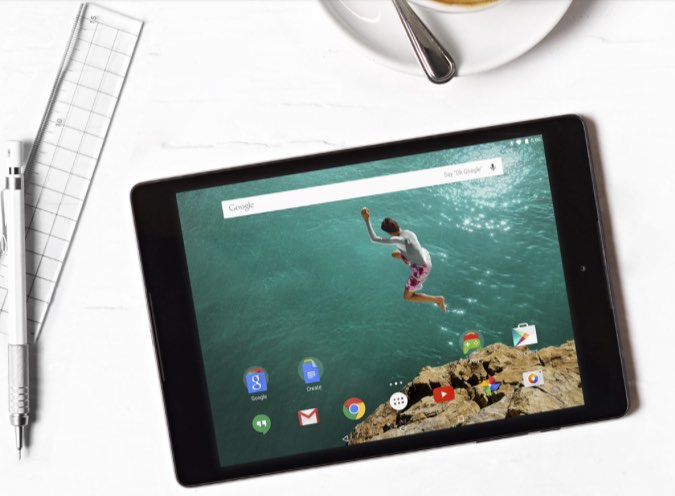
I’ve spent several weeks now with HTC’s Nexus 9 tablet. That’s a bit longer than a typical reviews, but with all the hype surrounding this device, I wanted to take the time to really run it through its paces. There are also questions surrounding the Nexus 9, primarily whether its unusual size should be considered a plus or a minus. Again, I wanted to spend time with it before coming to any snap decisions. Read my review to get the full scoop but here’s one spoiler: the Nexus 9 did make my best tablets of 2014 list.
Unboxing: Android Lollipop and a new Form factor
As a Google Nexus showcase device, the Nexus 9 is the first tablet to run the latest and greatest version of Android, 5.0 or Lollipop.
Out of the box it wanted to download a small update, but once that was done and installed (it took about 15 minutes) we were ready to rock. The startup was a little on the long side, but Google puts up some pretty animation to keep you distracted and then it was on to Android Lollipop.
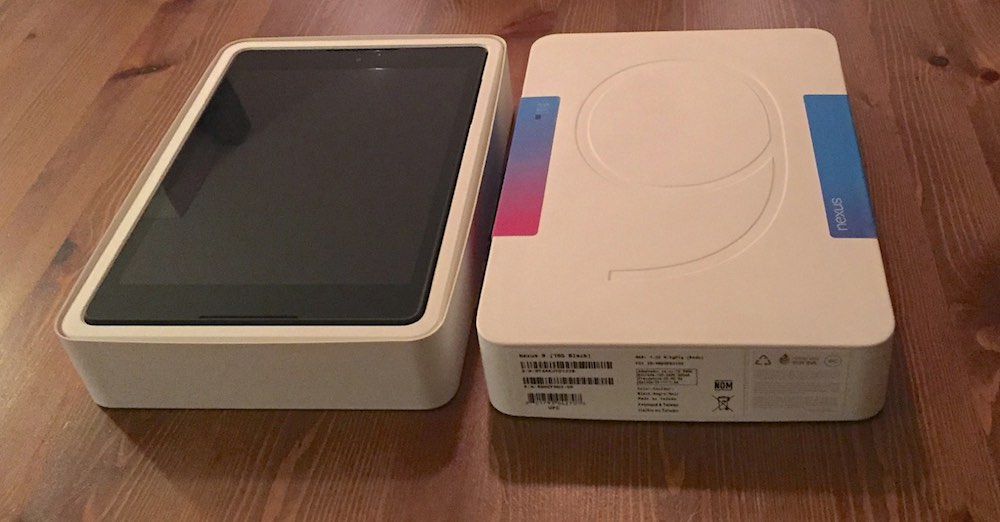
No third party UI. Even though HTC is the Nexus 9 manufacturer, the “Nexus” label means pure Android.
Nexus 9 Specifications
|
The Nexus 9 isn’t just the first tablet to ship with Android Lollipop. It marks a departure from last year’s Nexus 7 and Nexus 10 by adopting a 4:3 screen aspect ratio instead of the widescreen 16:10 used by the previous tablets. It also splits the difference between the two with an unusual 8.9-inch display size.
Besides the fact that my tester was black and it uses a plastic back panel, the overall look is closer to an iPad Air than previous Nexus tablets.
Size: Not As Polarizing As You Might Think
Many people weren’t sure what to make of the decision to make this year’s Nexus tablet an 8.9-inch device. That’s significantly larger than the Nexus 7, but smaller than the Nexus 10. In fact, at that size, it’s pushing the lower boundary of what could be considered a full-sized tablet.
In the photo below, you can see how the Nexus 9 (middle) compares to an iPad Mini and iPad Air.
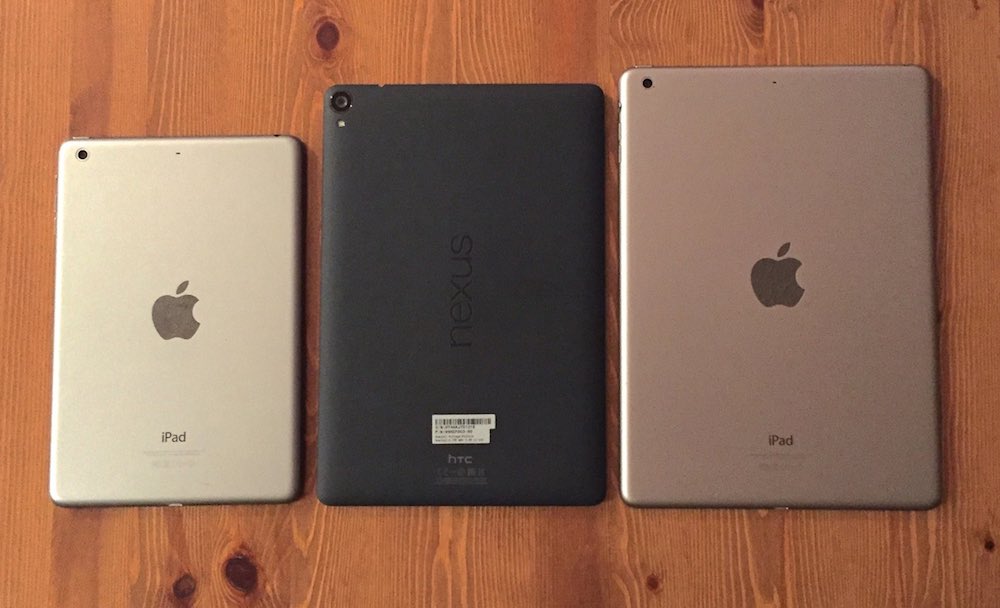
And again, but this time with the displays showing.
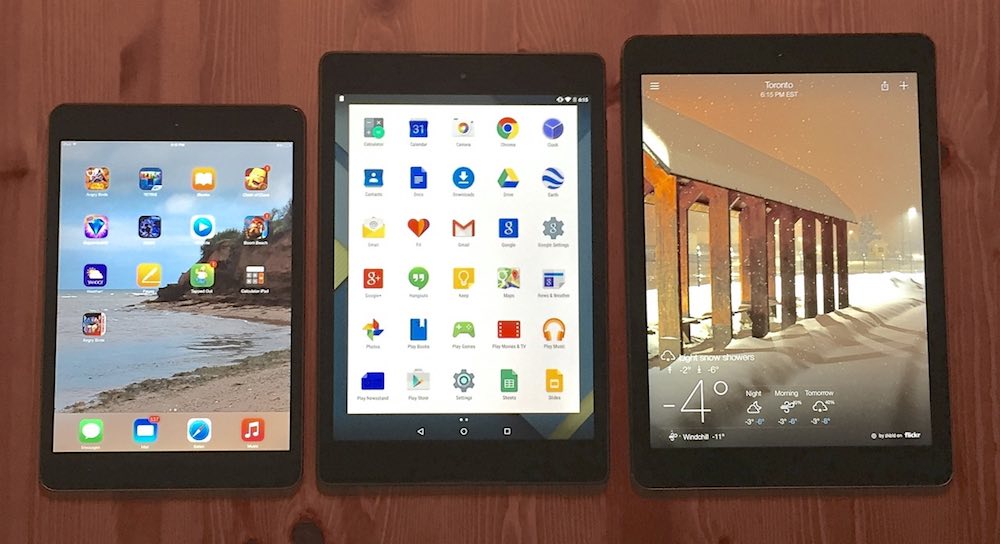
In the tech world, trying to replace two devices with one often leads to compromises, but in this case I don’t think the unusual size choice is going to end up putting many people off. For my personal tablet use I prefer an iPad Mini for most uses, turning to the larger iPad Air only for things like playing movies for the kids.
After spending many mornings catching up on the news and e-mail, I found the Nexus 9 was just fine for holding in one hand and the slightly larger display meant less zooming in on text. At the same time, it was large enough that it was still good for watching movies. The only caveat there is that if you’re used to a 16:10 aspect ratio tablet, the Nexus 9 with its 4:3 display will make widescreen movies seem even smaller with black bars on top and bottom.
I think that’s a worthwhile trade-off because the 4:3 display is more useful for just about everything else, but if video is a big deal to you, this may not be your tablet.
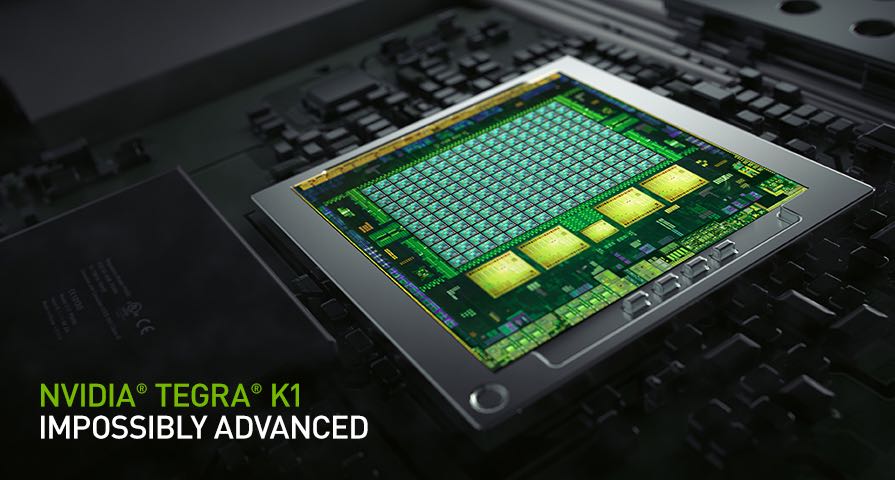 High Performance
High Performance
HTC chose Nvidia’s Tegra K1 64-bit CPU instead of the usual Snapdragon, and while I’m not sure which one would win out in a benchmarks war, Android Lollipop performed flawlessly. So no second-guessing HTC on that point. Navigating, launching apps, streaming video or playing games —everything was smooth with no lag or hesitation.
The display is a QXGA (2048 x 1536) resolution IPS LCD. That’s 288 pixels-per-inch, which is slightly sharper than the iPad Air’s 264 ppi, but not as good as the iPad Mini’s 326 ppi. It’s also under last year’s Nexus 7, which had 323 ppi. It doesn’t have the contrast or quite the same brightness as the iPad or many Samsung tablets, but the display is still nothing to complain about. I think most people would be more than happy with it.
It’s accompanied by HTC’s BoomSound, dual front-facing speakers. Between the display and the speakers, this tablet does well at multimedia.
If you’re a tablet photo-taking kind of person, you’ll be happy to know HTC upped the image sensor on the primary camera from the 5MP Nexus 7 version to 8MP. What can I say, it takes photos and does a decent job of it. There’s auto focus and a flash and the results are on par with many smartphones.
Battery life was a bit under what I’d see from my iPads, usually ranging from 8 to 9 hours of use. That’s with some pretty high intensity stuff, like constantly streaming HD movies.
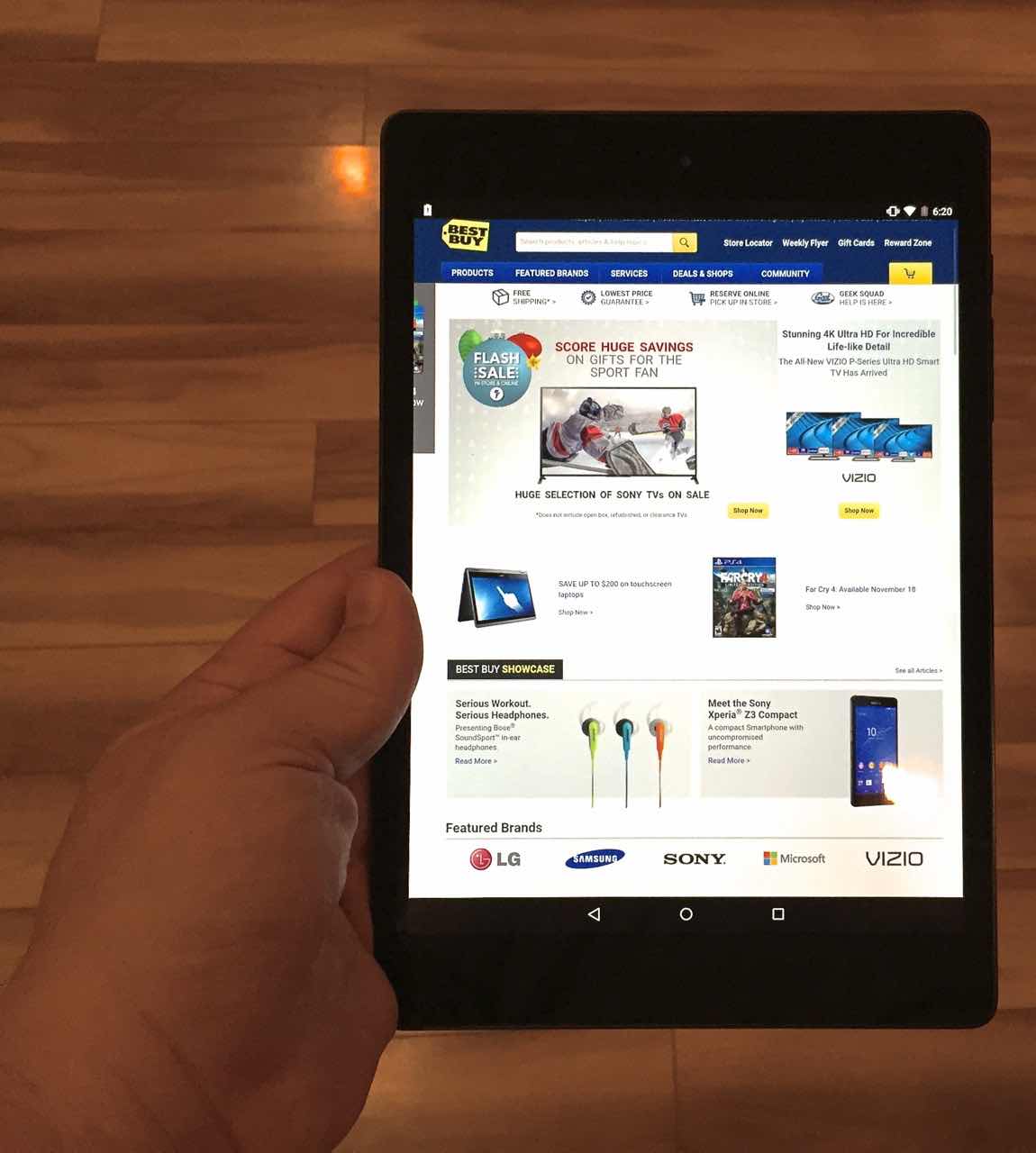 High Quality Build
High Quality Build
Google tends to position its Nexus gear as being inexpensive compared to the competition and that can lead to perceptions that build quality isn’t on par with more expensive tablets.
The Nexus 9 was well put together and certainly not unattractive. It’s a little on the thick side if you compare it to the Galaxy Tab S or iPad Air, but we’re talking a few millimetres. I found a few rough edges on the aluminum frame and the power button was too recessed for my liking (making it tough to locate by feel), but this is by no means a cheap feeling or looking tablet.
If you’re an iPad owner, you won’t miss this, but if you’re shopping the Nexus 9 against other Android tablets, it’s worth knowing this one does not have a microSD slot, so the built-in storage is what you get —no expansion.
Dispelling Several Early Nexus 9 Issues
I wasn’t kidding when I said there was a lot of buzz around the Nexus 9, but it hasn’t all been positive. I’ve read a number of rpre-release eviews where the issues of screen bleed and a flimsy back panel were raised.
Screen bleed is a term used to describe white backlight from an LCD panel showing through the edges of the screen. It’s most noticeable with dark images. The Nexus 9 that I had showed no signs of screen bleed. It’s possible that a few reviewers got imperfect units from an early run —that sometimes happens when a manufacturer rushes pre-release review units out.
The second issue is a flimsy back panel. There were some reports that it could be easily pushed in, like an air bubble. While my Nexus 9 does have some flex —the back panel is plastic— I had to really push it and the movement wasn’t that worrisome. One of my first Android tablets was an original NOOK Color and that tablet had a back panel that you could push and it would pop in and out. That was disconcerting. I don’t think you need to worry about the Nexus 9.
Verdict
I really grew to like the Nexus 9. It’s not the flashiest Android tablet out there but at the price point and size, I think it’s still a bargain. I had few complaints and even as someone who prefers iOS and iPads for my own use, between the Nexus 9 and Android Lollipop, the hardware and operating system became secondary to the experience. And that smooth experience, combined with the Nexus promise of future Android upgrades and a reasonable price tag made the Nexus 9 a winner.



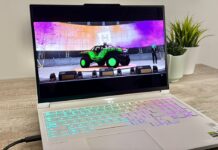
How does Android 5.0 perform versus 4.4 Kitkat? what are the differences?
How does the 64bit processor perform? Can you run it against the same app on another device? (iPad, another Android device, etc)
In general, 5.0 vs. Kitkat major gains are in visual appearance (Material Design), more detailed notifications and improved battery life —but there are tons of changes, most for the better… Material Design takes advantage of the 64-bit CPU for very smooth operation -pauses during launching, etc… are minimal (Google says an up to 4X improvement in responsiveness). Comparing app performance on different devices and OS versions would be interesting, but that would be a big project on its own, not something I could squeeze in a Nexus 9-specific review. Cheers, Brad.
Comments are closed.